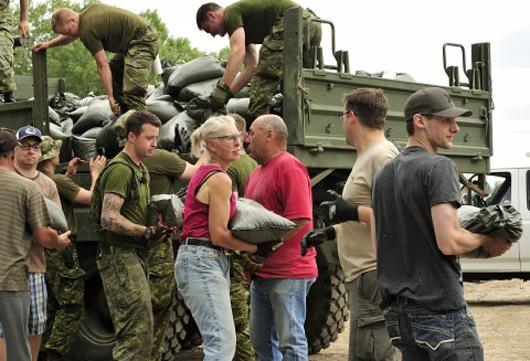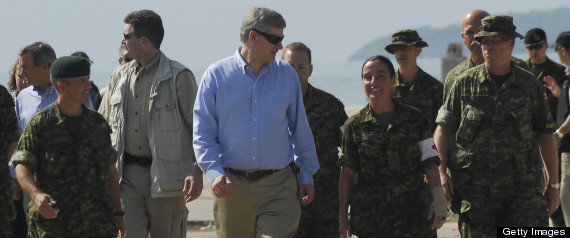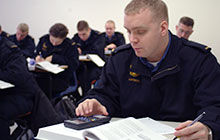As flood waters begin to recede across southern Alberta, it is important to take a moment to appreciate, and more fully understand, the role played by the Canadian military in responding to natural disasters. The support offered by the Canadian Forces, both regular and reserve service members, goes beyond the simple addition of manpower to supplement police forces that are already on the ground.
Canada has experienced a variety of large natural disasters in major population zones over the course of its history. The huge variation in geography and climate across the country has caused civilian emergency services to become quite versatile in their response duties. Disaster relief personnel across the country have combated floods, forest fires, ice storms, and hurricanes. It is when these regular emergency services are no longer capable of handling such emergencies that the federal government, usually at the request of a Premier or city mayor, deploys Canadian Forces personnel.
[captionpix align=”right” theme=”elegant” width=”300″ imgsrc=”http://natoassociation.ca/wp-content/uploads/2013/07/CanadianSoldiersHelicopterFlooding.jpg” captiontext=”Canadian Forces personnel with civilians rescued from the Alberta floods.”]
This role is set out in the mandates of the Canadian Forces, the fourth of which reads “support civilian authorities during a crisis in Canada, such as a natural disaster”. This support falls under three broad categories: national search and rescue, humanitarian assistance, and restoration of law and order. Within the last decade alone, five Canadian military operations of this kind have been launched to supplement civilian emergency services.
What is notable about the use of Canadian Forces in disaster relief is that the use of soldiers, as opposed to civilian volunteers, sees a vast difference in organization, equipment, and manpower. The military possesses equipment and specialized personnel that civilian law enforcement and rescue operations personnel simply do not have access to. This is most apparent in helicopter rescue operations. This past month in Alberta, soldiers deployed to High River saved over 600 people stranded on rooftops. This advantage did not come simply through added manpower, but with newfound availability of military assets. 2300 troops were mobilized by the Canadian Forces across the province to provide aid, with accompanying helicopters and light armoured vehicles.
The psychological impact of the presence of military personnel on the local population is also worth noting. Due to the rarity of such operations, the arrival of Canadian Forces personnel in many cases is seen as the “official” response to the crisis. This adds both confidence and peace of mind, with the presence of troops guaranteeing a continuation of law and order before even beginning other relief efforts.
The feats accomplished this past month by rescue personnel, both military and civilian, could not have been achieved without the active participation of both parties. Crucially, the manpower and equipment assistance provided by the military allows it to lend support to any deficient area of the relief effort. In some cases, such as Operation Lustre in Manitoba, the bulk of the Canadian Forces personnel were used to create or conduct repairs on flood barriers. In others, such as Operation Forge in Ontario and most recently in Alberta, military personnel were provided their assistance in enforcing mandatory evacuations.
Finally, an important facet to the military response to natural disasters is the use of the strategic reserves. The nature of domestic natural disasters is such that some reserve soldiers will be themselves victims, and through their military training are able to aid in disaster relief either through an official or unofficial fashion. The skills learned through military training will be available to them to help their local communities, while they will also be immediately available to the military should they be mobilized. Reserve Forces personnel have historically made substantial contributions to relief efforts, assisting in flood relief in Manitoba and Quebec, providing aid during the ice storms in Eastern Canada, and responding to forest fires in British Columbia and Alberta.
In sum, the value of the Canadian military in relief efforts for natural disasters cannot be understated. The unique skills brought by service members coupled with the versatility of the organization enables them to fulfill any role on the ground, anywhere in the country. They also bring with them equipment and expertise that civil law enforcement organizations do not have the funds or the capacity to possess.




